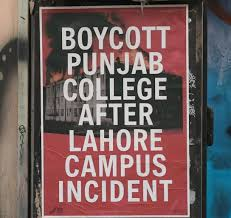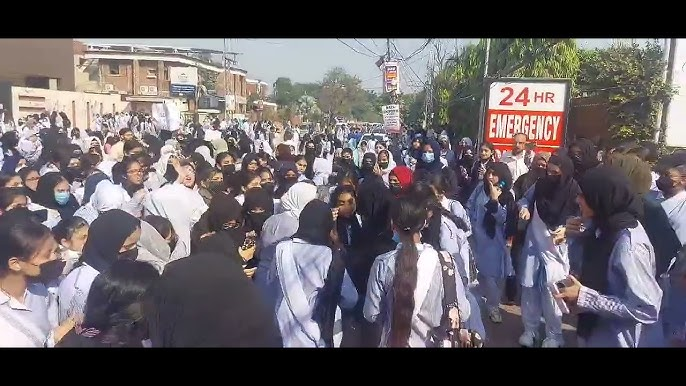Image Source
What is the news? Recently, on 8th
April 2025 , honourable Supreme court of India gave a landmark decision about
the withholding of the bills passed by the state legislature . The court also
mentioned some time limits regarding the holding of bill.
The matter and the role of nominated representative : Generally it is seen that when
the Governors and the state governments belong to same political party then the administration as well as the functioning
of the government runs in a proper and smooth manner . But when both of them
are from different political parties there is always a clash of thoughts . Similar
matter was seen between the Governor of Tamil Nadu and its state government
headed by MK Stalin . The Stalin government has passed about 10 bills and sent
to the Governor Shri T N RAVI . But the Governor had held the bill till
December 2023. When the Stalin government moved to the Supreme court on 18th
December 2023, on the same day The Governor sent all the bills to the
President. Out of 10 bills, 7 bills
were cancelled by her and 1 bill was
given permission, and two bills were not considered by The President.
This
matter was very deeply discussed for more than 2 years in front of various
benches of the Supreme Court. On 8th April 2025 , the two-judge bench
of the Supreme Court, represented by Justice J B Pardiwala and R Mahadevan, gave
a landmark decision. I will discuss the designs by the Supreme court, but before
the decisions, let’s know about some articles and role of the Governor according
to various intellectuals.
Article 163 discusses about the power of the governor
Article 200 says that “ When a bill has been passed by state assembly or in case of legislative council has
been passed by both the houses , it shall be presented to the Governor and the
Governor shall declare either that he assents to the bill or that he withholds the assent therefrom or that he reserves the
bill for the consideration of the President .
Some thoughts about the role of governors …….
As discussed earlier , the governor
always acts as a bone of contention for the government which belongs to the
opposite political thoughts . Our intellectuals have given very important
thoughts regarding the governor which is mentioned below ……
1.
Shri Jawahar Lal Nehru ji favoured the appointment of eminent
academicians from outside politics and Other outstanding and impartial people
from other walks of life as governors .
2.
B N RAU ( constitutional advisor to the constituent assembly
) favoured that Governor to be elected by
provincial legislature by secret vote.
3.
Sardar Vallabh Bhai Patel said that the Governor should be elected by
the people of the state for a term of four years and could be impeached for misbehaviour.
4.
J P Narayan suggested that Governor to
be made by the President from a panel of four persons selected by assembly and
member of parliaments of the concerned state.
5.
Ambedkar said that Governor is
just a figure head . We should not spend time and money for his election .
Governor would not represent ruling party at the centre but people of state .
6.
T T Krishnamachari suggested that Chief minister must
have veto power above the Governor.
7.
Supreme court in the Raghukul tilak case of 1979 said that Governors are not the employee of centre
but hold high constitutional office .
8.
Miguel de Cervantes suggested that The Good Governors must
have broken leg and keep at home .
9.
Many other intellectuals also suggested that Governor having
a faint presence like a full moon on midday . Governor must be present for
consulting the government , warning the government and also to encourage the
state.
Elected
representative must have more powers than the nominated one .
As per 7th
schedule of the Constitution, states
should be free to legislate on 66 subjects under state list .
In the famous
case of State of Punjab vs principal secretary to the Governor of Punjab
2013 , Supreme court suggested that Real power vests with elected
representatives of people in a parliamentary form of Government. The Governor as an appointee is a titular
ahead of the state .
About
discretion
Discretion has
the meaning of acting on one’s own authority and judgment. In law, discretion
as to legal rulings, such as whether evidence is excluded at a trial, may be
exercised by a judge.
Some thoughts
regarding the discretion……
10.
According to Edward
coke …. Discretion
is a science – discerning between falsity
and truth , between right and wrong , is not According to the will and
private affection . Absolute Discretion is however is a blassphemy.
11.
According to Justice William Doughlas of Supreme court of United states (
United states vs Wunderlich – 1951) …….. where discretion is absolute , man
has always suffered. Absolute discretion
is ruthless master (which is) more destructive of freedom than any of man’s
other inventions .
12.
Discretion means choosing from amongst various available
alternatives with reference to the rules of reason and justice not personal
whims.
13.
Discretion is to exercised with caution and in a reasonable
manner.
14.
Discretion cannot be dictated . It is to be exercised after a
proper application of mind to the facts and circumstances of the case at hand .
15.
Discretion cannot be exercised for improper purpose or with a
bad faith or by taking into account irrelevant consideration.
16.
Discretion cannot be exercised in an arbitrary or whimsical manner.
Why are we
discussing more about discretion…..
Article 142
empowers the Supreme Court to pass any order or decree necessary for complete
justice in any pending case before it. This power is discretionary and unique
to the apex court.
Using this
such an important article , Supreme court gave the landmark decision which is
discussed below ……
17.
Honourable Supreme court
gave a statement and said that prolonged action over 10 important
bills by Tamil Nadu governor is UNCONSTITUTIONAL.
18.
The decision about the bills by the President was declared as
void by the Apex court .
19.
Justice Pardiwala also said that a governor must be a friend
, guide and a philosopher to a State not as a hindrance. The Governor is envisaged aa a sagacious
counsellor . The court also said that the Governor must look within themselves
and reflect whether their actions were in line with the Constitutional ethos
and aspirations of the people . Delaying assent indefinitely on bills passed by
state legislature reduced the effectiveness of these laws.
20.
The Governor’s conduct was erroneous , arbitrary , non- est(non
existant) in law.
21.
The Governor acted as a roadblock by delaying actions
on the bills sent him for consent by assembly under article 200 of the
Constitution.
22.
The Governor has no right to use pocket veto and delaying the
bill.
The Supreme court has given a time
limit but in our Constitution no such a time limit is mentioned . The Supreme
court in very harsh language said that….
1.
A Governor has maximum of one month to withhold the assent on
the aid and advice of the State Cabinet.
2.
If he withholds assent contrary to the cabinets advice , he
has maximum of three months to return the bill with specifying the reasons .
3.
The governor has three months to reserve a bill for President’s
consideration against advice of the state cabinet .
4.
Governor must grant assent to a bill repassed by the cabinet within
a month under article 200.
5.
A Governor cannot exercise his personal discretion if a house
passed the same bill again and returned it to him for consent.
6.
Any failure by the Governor to comply with the timeliness would
invite for a JUDICIAL REVIEW.
The Stalin government has welcomed
the decision while the NDA government is going towards Supreme court to review it’s decision….
Team Yuva Aaveg-
Shashwat
🌟 Join Yuva Aaveg! 🌟
A vibrant community dedicated to empowering youth with the latest insights, discussions, and updates on topics that matter. Connect with like-minded individuals, share ideas, and stay inspired to make a difference.
📲 Join us on WhatsApp and Telegram for exclusive updates and engaging conversations!
WhatsApp
Telegram













